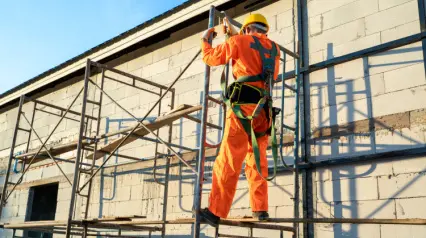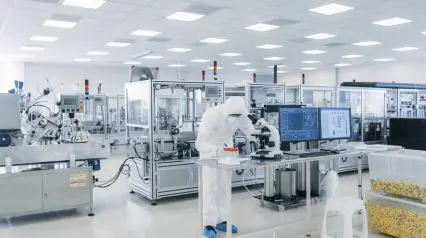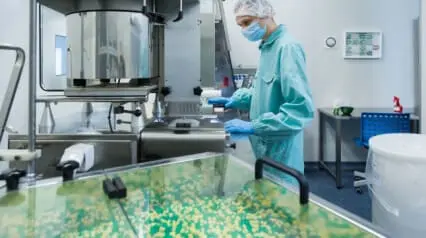What is PPE Safety Training?
Personal Protective Equipment (PPE) safety training is a program that educates workers in the proper use, selection, maintenance, and applications of different pieces of personal protective equipment that they use on the job. It also involves training employees in proper disposal of equipment to ensure safety in their work environment. This may include wearing hard hats, high-visibility clothing, steel-toed footwear, and protection for the eyes and ears.
Since PPE safety varies depending on your team’s industry, the specific project you’re tackling, and other factors, it’s important to tailor your safety training programs to your team’s needs. That way, you can tackle specific issues or risks that workers face throughout the project.
Importance
Having the right PPE isn’t enough to ensure worker safety in the field. It’s critical that everybody on the team understands when to use specific protective gear, how to use them effectively, and how to detect if it’s defective. That way, they can maximize the protection offered by the equipment. This is why organizations and teams must ensure that they have a comprehensive PPE training program that all employees go through before entering the field. This allows you to fully highlight the importance of proper PPE use and instill a culture of safety in your team.
Safer work practices like these protect employees, reduce the chances of surprise costs and damage to the business, and improve the company’s reputation. So, make sure that all employees go through proper PPE safety training before entering the field so they have all the knowledge they need to reduce the risks and hazards they face on the job.
How to Create an Effective PPE Training Program
While PPE training varies for every organization and team, there are a few key components that are present in all programs. That said, remember to always adjust and tweak these components according to your project, the risks your workers face in the field, and the regulatory requirements in your locality.
Step 1: Hazard Identification
The first step in creating a PPE training program is identifying the risks and hazards workers face in the field. Risk identification and assessment allow you to enumerate all the potential threats to worker safety.
Determining these safety threats will point you in the right direction regarding what PPE to use, how to use the equipment, and how to assess effectiveness.
Step 2: Proper Selection of PPE
Once all the risks and hazards are identified, the team can proceed to select the appropriate PPE for the job. This includes protection gear for potential falling objects, fall protection equipment, high-visibility clothing, steel-toe footwear, and others.
The appropriate PPE for your workplace largely depends on the project at hand and the risks your workers face. This is why it’s critical to pay close attention to the risk identification process and ensure that you leave no stone unturned.
Step 3: Training Modules
After selecting the appropriate PPE for the workplace, the next step is creating the training modules for each employee. These modules should cover everything from the basics of PPE usage to advanced scenarios. With the help of these training materials, every employee on the field will be knowledgeable on how to use their PPE effectively and receive the most protection possible.
Hands-on training, workshops, and simulations can be valuable components of these modules. In addition, consider utilizing digital platforms like SafetyCulture’s Training feature to simplify this process. Eliminate the guesswork out of creating training modules with over 1,000 training courses, which are fully customizable to your needs. Once deployed, employees can access and complete the necessary PPE safety training from their mobile devices without disrupting their workday.
Upskill your Team with SafetyCulture Training
Empower your team by deploying training courses through a digital platform. Enable your team to learn what they need to keep your workplace safe and be compliant.
Learn More about SafetyCulture TrainingStep 4: Assessments and Updates
No PPE training program is perfect. Regardless of how much time and effort you put into your initial training program, you will have to continuously assess and update the program based on technological advancements, new findings, or new regulatory requirements.
For this reason, the last step of creating and implementing a PPE training program is assessing how effective your training program is on a regular basis. Based on the results of this assessment, you should apply updates and corrections as necessary.




